- Benefits of Meadow Clover
- Cultivation of Meadow Clover
- 1. Choosing the Right Variety
- 2. Soil Preparation
- 3. Planting
- 4. Watering
- 5. Maintenance
- 6. Harvesting
- 7. Rotating Crops
- 8. Winter Care
- Varieties of Meadow Clover
- 1. Medium Red Clover (Trifolium pratense)
- 2. White Clover (Trifolium repens)
- 3. Alsike Clover (Trifolium hybridum)
- 4. Strawberry Clover (Trifolium fragiferum)
- 5. Zigzag Clover (Trifolium medium)
- Growing Meadow Clover in Your Garden
- Choosing the Right Location
- Preparing the Soil
- Sowing the Seeds
- Watering and Maintenance
- Fertilizing
- Harvesting and Uses
- Using Meadow Clover in Cooking
- Salads
- Smoothies
- Teas
- Soups and Stews
- Baked Goods
- Infused Oils and Vinegars
- Butter and Spreads
- Meadow Clover for Livestock Feed
- Benefits of Meadow Clover
- How to Incorporate Meadow Clover into Livestock Feed
- Considerations when Feeding Meadow Clover
- Questions and Answers:
- What is meadow clover and how is it cultivated?
- What are the properties of meadow clover?
- What are some popular varieties of meadow clover?
- How can meadow clover be used?
- What are the benefits of growing meadow clover in a garden?
- Videos: Growing clover! Fall vs. spring planting? Side by side comparison!
Meadow clover, also known as Trifolium pratense, is a versatile and beneficial plant that can be cultivated for various purposes. It belongs to the legume family and is well-known for its nitrogen-fixing properties, making it a valuable addition to any garden or farm.
When it comes to cultivation, meadow clover is relatively easy to grow. It prefers rich, well-drained soil and thrives in full sun or partial shade. The seeds can be sown directly in the ground in early spring or late summer. It is important to keep the soil moist during the germination period, which usually takes about a week. Once established, meadow clover requires minimal care and can survive in dry conditions.
One of the main benefits of meadow clover is its ability to improve soil fertility. As a nitrogen-fixing plant, it works in symbiosis with bacteria in its root nodules to convert atmospheric nitrogen into a form that can be utilized by other plants. This makes it an excellent green manure crop to enrich the soil with nitrogen and improve its overall health.
In addition to its soil-enhancing properties, meadow clover also provides an important food source for pollinators, such as bees and butterflies. Its vibrant pink flowers attract these beneficial insects, making it a valuable addition to pollinator gardens. Moreover, meadow clover is also used as a forage crop for livestock, as it is highly palatable and nutritious.
There are several varieties of meadow clover available, each with its own characteristics and uses. Some popular varieties include “Red Clover,” which is known for its deep pink flowers and excellent forage quality, and “White Clover,” which is a low-growing variety often used in lawns and pastures. Other varieties include “Alsike Clover,” “Crimson Clover,” and “Sweet Clover,” each with its own unique features and benefits.
In conclusion, meadow clover is a versatile and beneficial plant that can enhance soil fertility, attract pollinators, and provide valuable forage for livestock. Whether you are a gardener, farmer, or just a nature enthusiast, meadow clover is definitely worth considering for your green spaces.
Benefits of Meadow Clover
- Meadow Clover is a versatile plant that offers numerous benefits for both humans and the environment.
- The plant helps fix nitrogen in the soil, making it an excellent choice for improving soil fertility and promoting healthy plant growth.
- Its deep root system helps prevent soil erosion, making it an ideal plant for stabilizing slopes and preventing runoff.
- Meadow Clover is known for its ability to attract beneficial insects, such as bees and butterflies, which play a crucial role in pollination.
- By attracting pollinators, Meadow Clover can help increase the fruit set and yield of other plants in the area.
- Its flowers are not only attractive but also serve as a valuable food source for bees and other pollinators, helping to support their populations.
- As a cover crop, Meadow Clover can suppress weed growth by competing for space, light, and nutrients with unwanted plants.
- Its dense growth can also help smother out weeds, reducing the need for chemical herbicides.
- Meadow Clover has been used as a forage crop for livestock due to its high nutritional value and palatability.
- The plant’s deep taproot allows it to access water and nutrients from deeper soil layers, making it more drought-tolerant compared to other plants.
- It can also improve soil structure by breaking up compacted soil and improving its water-holding capacity.
Cultivation of Meadow Clover
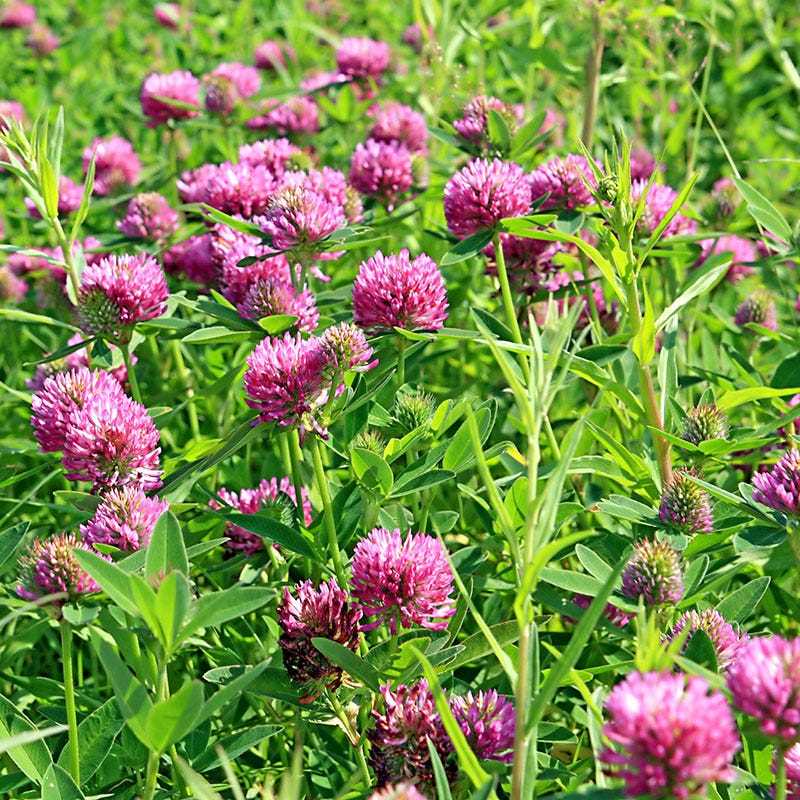
Meadow clover is a versatile and easy-to-grow plant that can be cultivated in a variety of settings. Whether you’re a home gardener looking to add beauty to your landscape or a farmer interested in improving soil quality, meadow clover is a great choice. Here are some tips on how to cultivate meadow clover:
1. Choosing the Right Variety
There are several varieties of meadow clover available, each with its own unique characteristics. Before you start cultivating, it’s essential to choose the right variety for your specific needs. Some varieties are better suited for grazing, while others are more suitable for soil enrichment.
2. Soil Preparation
Meadow clover thrives in well-drained soil with a neutral pH. Before planting, prepare the soil by removing any weeds or grass and loosening it with a garden fork or tiller. Adding organic matter, such as compost or aged manure, can also improve soil fertility and drainage.
3. Planting
When planting meadow clover seeds, it’s crucial to ensure good seed-to-soil contact. Scatter the seeds evenly over the prepared soil surface and lightly tamp them down with a rake or garden roller. Depending on the variety, the recommended seeding rate may vary.
4. Watering
Keep the soil moist but not overly saturated during the germination period. Once the plants are established, meadow clover is relatively drought-tolerant, but regular watering can help promote healthy growth and flowering.
5. Maintenance
Meadow clover requires minimal maintenance once it’s established. Regular mowing can help control weeds and promote a fuller, more compact growth habit. Avoid using herbicides or pesticides, as meadow clover is typically resistant to pests and diseases.
6. Harvesting
Depending on the variety, meadow clover can be harvested for its edible leaves or used as a cover crop to improve soil fertility. If you’re interested in harvesting the leaves, wait until the plants are mature and the leaves are at their peak flavor and tenderness.
7. Rotating Crops
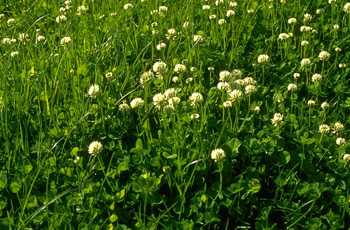
For farmers, rotating meadow clover with other crops can help break pest and disease cycles and improve soil health. Consider including meadow clover in your crop rotation plan to benefit from its nitrogen-fixing properties and overall soil improvement benefits.
8. Winter Care
In colder climates, meadow clover may require some winter protection to survive. Consider mulching the plants with a layer of straw or leaves to insulate the roots and protect them from freezing temperatures.
By following these cultivation tips, you can successfully grow meadow clover and enjoy its numerous benefits. Whether you’re looking to attract pollinators, improve soil fertility, or add a touch of beauty to your landscape, meadow clover is an excellent choice.
Varieties of Meadow Clover
Meadow clover comes in several different varieties, each with its own unique characteristics and uses. Here are some popular varieties of meadow clover:
1. Medium Red Clover (Trifolium pratense)
Medium Red Clover is one of the most commonly used varieties of meadow clover. It has deep red flowers and can reach a height of up to 3 feet. This variety is known for its ability to fix nitrogen in the soil, making it a valuable addition to crop rotation plans.
2. White Clover (Trifolium repens)
White Clover is another popular variety of meadow clover. It has small white flowers and spreads rapidly through its creeping stems. White Clover is often used as a ground cover, as it can tolerate heavy foot traffic and suppress the growth of weeds.
3. Alsike Clover (Trifolium hybridum)
Alsike Clover is a hybrid variety that is a cross between Red Clover and White Clover. It has pink flowers and is well-suited for wetter climates and poorly drained soils. Alsike Clover is also known for its ability to withstand colder temperatures and is often used in northern regions.
4. Strawberry Clover (Trifolium fragiferum)
Strawberry Clover is a low-growing variety with small pink flowers. It is well-adapted to dry and sandy soils and is often used in pastures and for erosion control. Strawberry Clover is also highly attractive to bees and other pollinators.
5. Zigzag Clover (Trifolium medium)
Zigzag Clover is a unique variety with yellow flowers that form a distinct zigzag shape along the stem. It is well-suited for low-maintenance areas and can tolerate a wide range of soil conditions. Zigzag Clover is often used in wildflower mixtures and roadside plantings.
| Variety | Flower Color | Height | Climate | Uses |
|---|---|---|---|---|
| Medium Red Clover | Deep red | Up to 3 feet | Wide range | Nitrogen fixation, crop rotation |
| White Clover | White | Up to 6 inches | Wide range | Ground cover, weed suppression |
| Alsike Clover | Pink | Up to 2 feet | Wetter climates, poorly drained soils | Cold tolerance, forage |
| Strawberry Clover | Pink | Up to 1 foot | Dry, sandy soils | Pastures, erosion control |
| Zigzag Clover | Yellow | Up to 2 feet | Wide range | Wildflower mixtures, roadside plantings |
These are just a few examples of the many varieties of meadow clover available. Each variety has its own unique qualities and can be used for various purposes such as nitrogen fixation, ground cover, erosion control, and forage. Choose the variety that best suits your specific needs and growing conditions.
Growing Meadow Clover in Your Garden
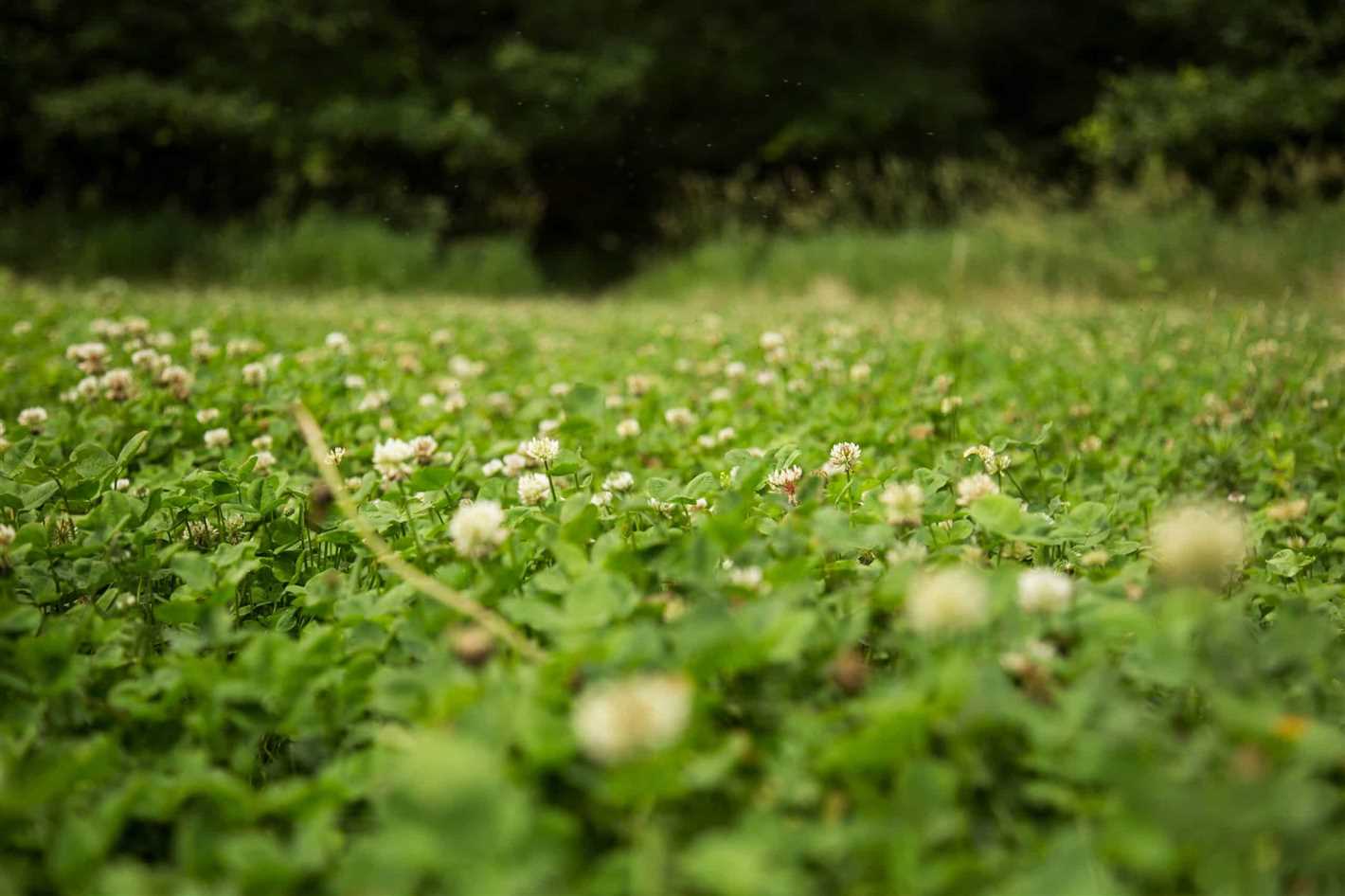
Meadow clover is a versatile and easy-to-grow plant that can add beauty and diversity to your garden. Whether you have a large plot or a small container, you can cultivate and enjoy this lovely wildflower. Here are some tips and guidelines to help you successfully grow and care for meadow clover in your garden.
Choosing the Right Location
Before planting meadow clover, it’s important to select a suitable location that provides the optimal growing conditions. Meadow clover prefers full sun to partial shade, so choose a spot in your garden that receives at least 6-8 hours of direct sunlight per day. Additionally, the soil should be well-draining and fertile, with a pH level between 6.0 and 7.5.
Preparing the Soil
Prepare the soil before planting by removing any weeds or grass and loosening it with a garden fork or tiller. Add organic matter such as compost or well-rotted manure to improve the soil’s fertility and drainage. It’s also recommended to perform a soil test to determine if any additional amendments, such as lime or sulfur, are needed to adjust the pH level.
Sowing the Seeds
Meadow clover seeds can be sown directly into the garden in late winter or early spring, after the danger of frost has passed. Scatter the seeds evenly over the prepared soil and lightly press them into the surface, ensuring good seed-to-soil contact. Water gently to moisten the soil, being careful not to wash away the seeds.
Watering and Maintenance
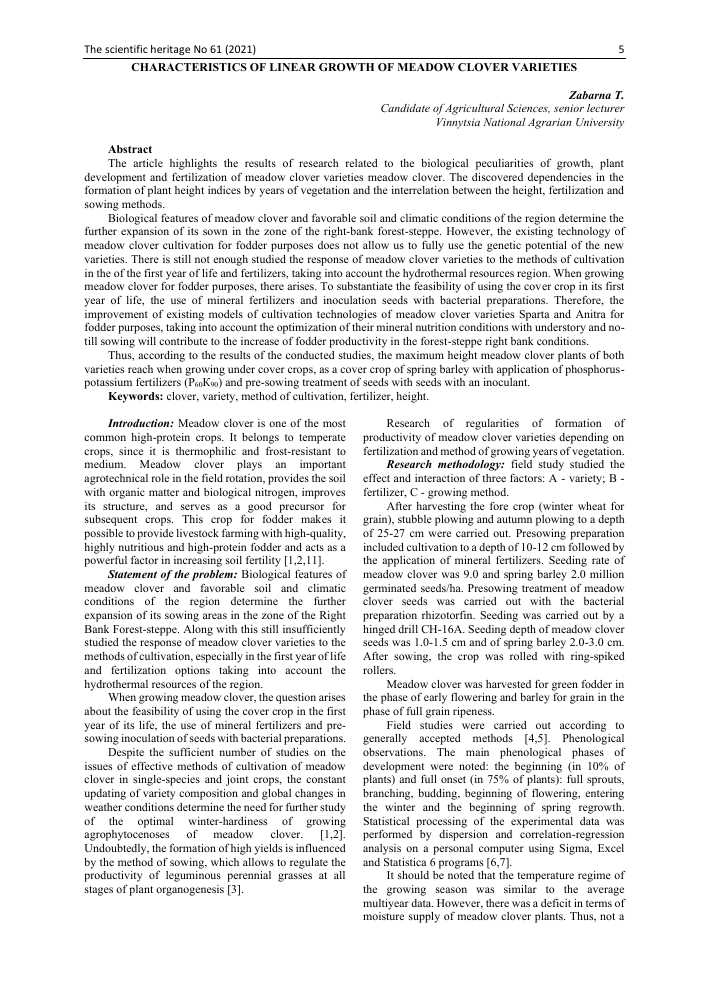
Once the seeds are sown, keep the soil evenly moist until the seeds germinate, usually within 7-14 days. After germination, water the plants regularly, providing about 1 inch of water per week. It’s important to keep the soil consistently moist but not waterlogged to prevent root rot. Additionally, remove any weeds that may compete with the meadow clover for nutrients and space.
Fertilizing
Meadow clover is a nitrogen-fixing plant, which means it can convert nitrogen from the air into a form that other plants can use. Therefore, it typically doesn’t require additional fertilization. However, if your soil is particularly poor or lacking in nutrients, you can apply a balanced slow-release fertilizer in early spring to promote healthy growth.
Harvesting and Uses
Meadow clover can be harvested for its flowers and leaves. The flowers can be used to make herbal teas, infused oils, or dried arrangements, while the leaves are edible and can be added to salads or used as a garnish. Harvest the flowers in the morning when they’re fully open, and dry them in a well-ventilated area away from direct sunlight.
| Light | Soil | Watering | Fertilization |
|---|---|---|---|
| Full sun to partial shade | Well-draining, fertile (pH 6.0-7.5) | Consistently moist (1 inch/week) | Not necessary, but optional in poor soils |
By following these guidelines, you can successfully grow and enjoy meadow clover in your garden. Whether you’re attracted to its vibrant flowers or its culinary uses, meadow clover is a wonderful addition to any garden.
Using Meadow Clover in Cooking
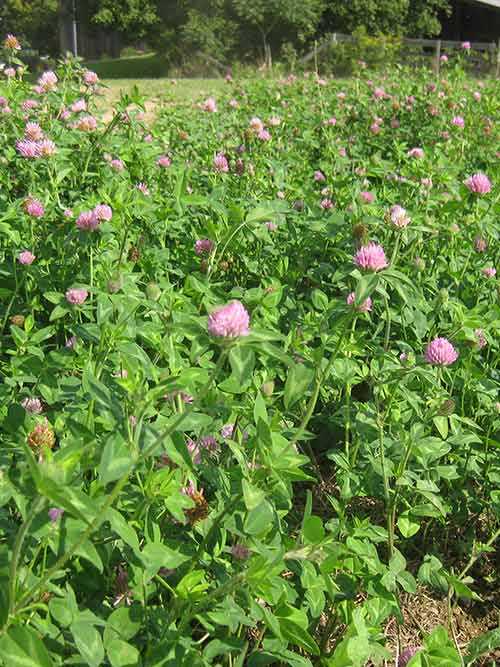
Meadow clover, with its delicate and slightly sweet flavor, can be a delicious addition to many dishes. Here are some ideas for using meadow clover in your cooking:
Salads
Add a handful of fresh meadow clover leaves to your favorite salad for a pop of color and a subtle herbal taste. Meadow clover pairs well with crisp greens, citrus fruits, and creamy dressings.
Smoothies
Blend a handful of meadow clover leaves into your morning smoothie for an extra boost of nutrients. Meadow clover adds a refreshing flavor that complements both fruity and green smoothies.
Teas
Dry meadow clover leaves and flowers to make your own herbal teas. Steep a tablespoon of dried meadow clover in hot water for a few minutes, strain, and enjoy a soothing and aromatic beverage.
Soups and Stews
Enhance the flavor of your favorite soups and stews by adding a handful of fresh or dried meadow clover. The subtle sweetness of the clover can help balance out the savory elements of the dish.
Baked Goods
Get creative in the kitchen and experiment with adding meadow clover to your baked goods. Try incorporating dried and ground meadow clover leaves into cookies, muffins, or bread for a unique and flavorful twist.
Infused Oils and Vinegars
Create your own infused oils and vinegars by steeping fresh meadow clover in olive oil or apple cider vinegar. Use these flavorful creations as dressings, marinades, or dipping sauces.
Butter and Spreads
Mix fresh meadow clover leaves into softened butter or cream cheese for a fragrant and tasty spread. Use it on bread, crackers, or as a topping for grilled meats and vegetables.
Remember to always wash meadow clover thoroughly before using it in your recipes, and consult a reliable source to ensure that you have correctly identified the plant.
Meadow Clover for Livestock Feed
Meadow clover, also known as Trifolium pratense, is a versatile plant that can be used as a valuable source of nutrition for livestock. Its high protein content and palatability make it an excellent choice for feeding animals such as cattle, goats, and sheep.
Benefits of Meadow Clover
- High Protein Content: Meadow clover is rich in protein, which is essential for the growth and development of animals. Including meadow clover in their diet can help improve their overall health and productivity.
- Palatability: Livestock animals find meadow clover highly palatable, making it easier to incorporate into their diet. This ensures that they consume the necessary nutrients without any reluctance.
- Nutritional Value: Aside from protein, meadow clover contains other essential nutrients like vitamins, minerals, and carbohydrates. These nutrients aid in improving the overall nutrition intake of the animals.
- Improved Digestion: Meadow clover is known to promote better digestion in livestock. It contains fiber, which aids in the breakdown of food and enhances the absorption of nutrients.
How to Incorporate Meadow Clover into Livestock Feed
There are several ways to include meadow clover in the diet of livestock animals. Here are a few methods:
- Harvesting Meadow Clover: Meadow clover can be harvested and dried to create hay, which can then be fed to livestock animals. It is crucial to ensure proper drying to prevent mold formation.
- Pasture Grazing: Allow livestock animals to graze on meadow clover in pastures. Regular rotation of grazing areas will prevent overgrazing and ensure the sustainability of the meadow clover.
- Haylage or Silage: Meadow clover can be harvested and ensiled to create haylage or silage, which provides a nutritious feed option for livestock animals.
Considerations when Feeding Meadow Clover
While meadow clover is an excellent feed option for livestock, there are a few considerations to keep in mind:
- Introduce Gradually: When incorporating meadow clover into the diet of livestock animals, it is essential to introduce it gradually to avoid digestive issues.
- Avoid Overgrazing: Overgrazing can lead to the depletion of meadow clover plants. Implementing a rotational grazing system can help prevent this and ensure long-term availability.
- Balanced Diet: Meadow clover should be part of a balanced diet for livestock animals. It is crucial to combine it with other feed sources to ensure they receive all the necessary nutrients.
- Quality Control: It is essential to regularly monitor the quality of meadow clover feed, especially when using harvested hay. Inspect for mold, dust, or signs of spoilage to prevent any negative impacts on animal health.
| Benefits of Meadow Clover | How to Incorporate Meadow Clover | Considerations when Feeding Meadow Clover |
|---|---|---|
| High protein content | Harvesting Meadow Clover | Introduce gradually |
| Palatability | Pasture grazing | Avoid overgrazing |
| Nutritional value | Haylage or silage | Balanced diet |
| Improved digestion | Quality control |
Questions and Answers:
What is meadow clover and how is it cultivated?
Meadow clover, also known as Trifolium pratense, is a perennial flowering plant that belongs to the legume family. It is cultivated by sowing the seeds in well-drained soil, preferably in a sunny location. The seeds should be covered lightly with soil and watered regularly. Meadow clover is a nitrogen-fixing plant and is often used as a cover crop to improve soil fertility.
What are the properties of meadow clover?
Meadow clover has several beneficial properties. It is a good source of nitrogen and can improve the fertility of the soil. It also attracts pollinators like bees and butterflies, making it beneficial for biodiversity in the garden. Meadow clover is also known for its deep root system, which helps to prevent soil erosion. Additionally, it has been used in traditional medicine for its potential health benefits.
What are some popular varieties of meadow clover?
Some popular varieties of meadow clover include Dutch White Clover, Red Clover, and Ladino Clover. Dutch White Clover is a low-growing variety that is often used in lawns and pastures. Red Clover is known for its vibrant reddish-pink flowers and is commonly used as a forage crop. Ladino Clover is a larger variety that produces white flowers and is often used in hay production.
How can meadow clover be used?
Meadow clover has a variety of uses. It can be used as a cover crop to improve soil fertility and prevent soil erosion. It is also commonly used as a forage crop for livestock, as it is highly nutritious. Meadow clover can also be used in herbal teas and as an ingredient in natural remedies due to its potential health benefits. Additionally, it can be grown in home gardens to attract pollinators and add beauty to the landscape.
What are the benefits of growing meadow clover in a garden?
There are several benefits of growing meadow clover in a garden. Firstly, it attracts beneficial insects like bees and butterflies, which can help with pollination and improve biodiversity. Secondly, meadow clover is a nitrogen-fixing plant, meaning it takes nitrogen from the air and converts it into a form that plants can use. This improves the fertility of the soil and can benefit other plants in the garden. Additionally, meadow clover has deep roots that help to prevent soil erosion and improve soil structure. Lastly, meadow clover adds beauty to the garden with its vibrant flowers.







